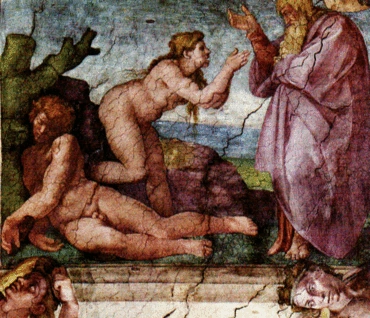Explanation of Genesis 2:23
Po Brian David

The celestial people of the Most Ancient Church, motivated by the love of the Lord, were in a constant state of sensing the separation between their internals and their externals. They could be externally involved with the necessities of life – gathering and preparing food, caring for children, caring for each other – while deep in their minds being constantly aware of the Lord, and of angels, and of the spiritual value of even the external things they were doing. But to give them the sense that life was their own, the Lord had to emphasize their externals and give them the leading role. So the people lost their constant awareness of spiritual things.
That is represented here. "Bone of my bones" means that the dead, hellish sense of self in external life was linked to the same thing in internal life. "Flesh of my flesh" means the living, heavenly sense of self in externals is also linked to internals. "Woman" means the sense of self as a complete state of life, and "man" – used in a specifically masculine sense here – means intellectual thoughts and concepts in the internal man. So at all levels, the external sense that life was their own took dominance in the people of the Most Ancient Church.
(Reference: Arcana Coelestia 156, 0157, 158, 159)
Divine Love and Wisdom #18
18. Anyone can come to an inner assurance about the presence of infinite things in God--anyone, that is, who believes that God is a person; because if God is a person, he has a body and everything that having a body entails. So he has a face, torso, abdomen, upper legs, and lower legs, since without these he would not be a person. Since he has these components, he also has eyes, ears, nose, mouth, and tongue. He also has what we find within a person, such as a heart and lungs and the things that depend on them, all of which, taken together, make us human. We are created with these many components, and if we consider them in their interconnections, they are beyond counting. In the Divine-Human One, though, they are infinite. Nothing is lacking, so he has an infinite completeness.
We can make this comparison of the uncreated Person, who is God, with us who are created, because that God is a person. It is because of him that we earthly beings are said to have been created in his image and in his likeness (Genesis 1:26-27).






